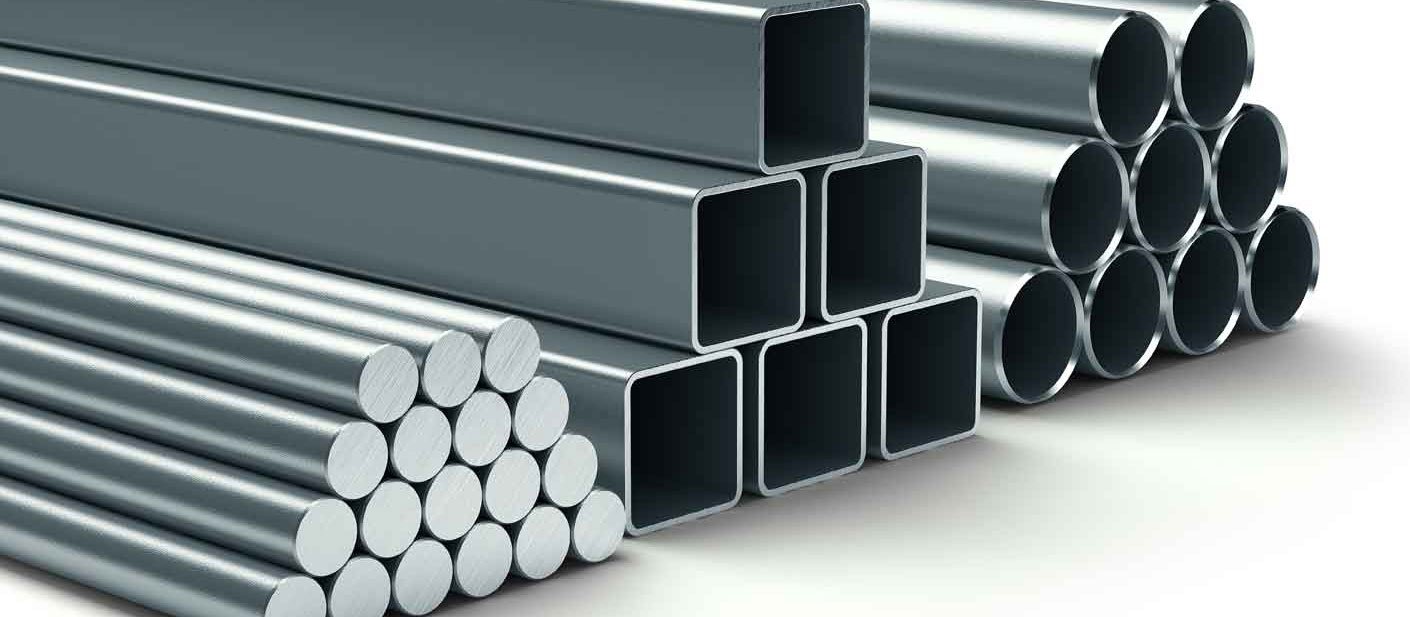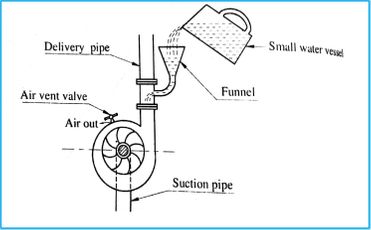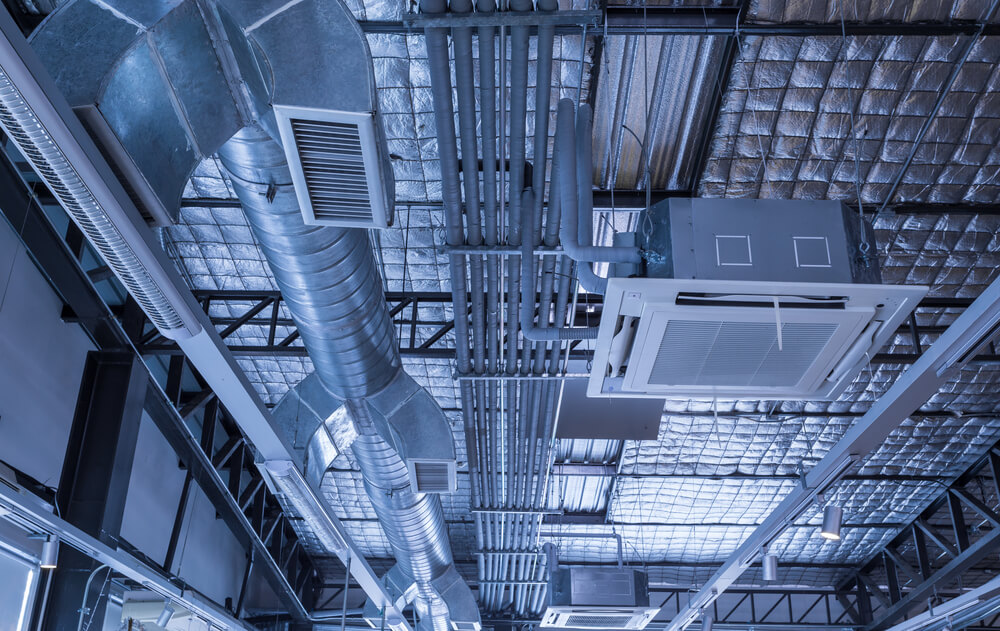Steel is an alloy of iron and carbon, often with small amounts of other elements such as manganese, chromium, nickel, and molybdenum. It is a strong and durable material that is used in a wide range of applications, including construction, automobiles, and industrial machinery. It can be produced in various forms, such as bars, sheets, and plates, and can be further processed to create different types of steel like carbon steel and with specific properties, as stainless steel, which is resistant to corrosion, and high-carbon steel, which is strong and hard but brittle.
What is Carbon Steel
Carbon steel is a type of steel that contains carbon as the main alloying element, typically in the range of 0.12% to 2%. Carbon steel is a strong and durable material that can be heat-treated to improve its strength and hardness. The presence of carbon in the alloy gives carbon steel its characteristic hardness and strength, but also makes it less ductile and more prone to brittleness.
Carbon steel is used in a wide range of applications, including construction, automobiles, and industrial machinery. It is also used to make tools, such as knives and axes, and is a common material for pipes and fittings in the oil and gas industry. It’s also known as plain-carbon, which is the most common form of steel.

What is Stainless Steel
Stainless steel is a type of steel that contains at least 10.5% chromium and is highly resistant to rust and corrosion. The chromium forms a thin film of chromium oxide on the surface of the steel, which acts as a barrier to protect the steel from rust and other forms of corrosion. Stainless steel also contains small amounts of other elements such as nickel, molybdenum, and nitrogen, which can affect its properties and make it suitable for different types of applications.
There are various types of stainless steel, each with different properties and intended uses. Some common types include:
- Austenitic stainless , which is the most common type and is known for its excellent corrosion resistance and formability.
- Ferritic stainless steel, which has good corrosion resistance but is less strong and ductile than other types.
- Martensitic stainless , which has good hardenability and strength, but lower corrosion resistance than other types.
- Duplex stainless , which combines the properties of ferritic and austenitic stainless steel and offers high strength, corrosion resistance, and toughness.
Stainless steel is used in a wide range of applications, such as cutlery and kitchen utensils, medical instruments, industrial equipment, and construction. It is also commonly used in the aerospace, chemical, and food processing industries due to its high resistance to corrosion and staining.
Differences Between Carbon and Stainless Steel
Carbon steel and stainless steel are two commonly used types of steel, but they have some significant differences.
- Composition: The main difference between carbon and stainless steel is the amount of carbon in the alloy. Carbon contains up to 2% carbon, while stainless contains at least 10.5% chromium, with other elements such as nickel and molybdenum present in smaller amounts. The presence of chromium in stainless steel creates a thin layer of chromium oxide on the surface of the steel, which acts as a barrier to protect the steel from rust and other forms of corrosion.
- Properties:
- Carbon steel is known for its hardness and strength, but it is also less ductile and more prone to brittleness than stainless steel.
- Stainless steel, on the other hand, is highly resistant to rust and corrosion and is known for its excellent formability. It is also generally stronger and more ductile than carbon steel.

- Applications:
- Carbon steel is used in a wide range of applications, including construction, automobiles, and industrial machinery. It is also used to make tools, such as knives and axes, and is a common material for pipes and fittings in the oil and gas industry.
- Stainless steel is used in a wide range of applications, such as cutlery and kitchen utensils, medical instruments, industrial equipment, and construction. Its corrosion resistance and staining properties make it suitable for use in the aerospace, chemical, and food processing industries.
- Cost: Stainless steel is generally more expensive than carbon steel due to the additional cost of the alloying elements, such as chromium, nickel, and molybdenum. However, the cost can vary depending on the specific type of stainless steel and the market conditions.
- Weldability: Carbon steel is relatively easy to weld, while stainless steel is more difficult to weld due to its higher alloy content and the formation of a chromium oxide layer on the surface. Special techniques and equipment are required to properly weld stainless steel.
- Finishing: Carbon steel is typically painted or coated to protect it from rust and corrosion, while stainless steel does not require any additional finishing due to its corrosion-resistant properties.
- Heat treatment: Carbon steel can be heat-treated to improve its strength and hardness, which makes it suitable for applications that require high strength and durability. Stainless steel, on the other hand, cannot be heat-treated to the same degree as carbon steel, but it does have the ability to be hardened through cold working.
- Machinability: Carbon steel is easier to machine than stainless steel due to its lower alloy content and lower levels of hardness. Stainless steel is more difficult to machine due to its increased hardness, and specific tools and techniques are required to machine it effectively.
- Appearance: Carbon steel has a distinct dark gray or black appearance, while stainless steel has a shiny silver appearance due to the chromium oxide layer on the surface.
- Magnetic properties: Carbon steel is magnetic while stainless steel is not magnetic. This difference is due to the presence of iron in carbon steel which makes it magnetic while the presence of chromium in stainless steel makes it non-magnetic.
- Corrosion resistance: Stainless steel is more corrosion resistant than carbon steel, but not all stainless steels have the same corrosion resistance. The corrosion resistance of stainless steel depends on the type of alloying elements present and the environment in which it is used. Some types of stainless steel, such as the high-alloyed austenitic stainless steels, are much more resistant to corrosion than others, such as the martensitic stainless steels.
- Sustainability: Carbon steel is more sustainable than stainless steel due to its lower use of energy and resources in production and its ability to be recycled. Stainless steel is also recyclable but the recycling process is more energy-intensive.
Carbon steel is strong and durable but more prone to rust and corrosion than stainless steel. Stainless steel is corrosion-resistant and strong but more expensive than carbon steel. Each type of steel has its own unique properties, and the best choice will depend on the specific application and desired properties.
Advantages and Disadvantages of Carbon Steel
Carbon steel has a number of advantages and disadvantages that make it suitable for certain applications and not others.
Advantages of Carbon Steel:
- Strong and durable: This steel is known for its strength and durability, making it suitable for applications that require high strength and resistance to wear and tear.
- Easy to machine: Steel is relatively easy to machine and shape, making it suitable for applications that require complex shapes and tight tolerances.
- Easy to weld: The steel is relatively easy to weld, making it suitable for applications that require strong and durable joints.
- Low cost: Carbon steel is generally less expensive than stainless steel and other types of steel.

Disadvantages of Carbon Steel:
- Prone to rust and corrosion: Carbon steel is more prone to rust and corrosion than stainless steel, making it less suitable for applications that require high resistance to corrosion.
- Brittle: Carbon steel is more brittle than stainless steel and other types of steel, making it less suitable for applications that require high ductility and toughness.
- Requires additional finishing: Carbon steel requires additional finishing, such as painting or coating, to protect it from rust and corrosion.
Advantages and Disadvantages of Stainless Steel
Stainless steel is a popular material that has a number of advantages and disadvantages that make it suitable for certain applications and not others.
Advantages of Stainless Steel:
- Corrosion resistance: Stainless steel is highly resistant to rust and corrosion, making it suitable for applications that require high resistance to corrosion.
- Strength and durability: Stainless steel is generally stronger and more durable than carbon steel, making it suitable for applications that require high strength and resistance to wear and tear.
- High temperature resistance: Stainless steel can withstand high temperatures, making it suitable for applications that require heat resistance.
- Aesthetically pleasing: Stainless steel has a shiny silver appearance, making it suitable for applications where appearance is important such as architecture and interior design.
- Recyclable: Stainless steel is a recyclable material, which makes it an environmentally friendly option.
Disadvantages of Stainless Steel:
- Expensive: Stainless steel is generally more expensive than carbon steel due to the additional cost of the alloying elements.
- Difficult to machine: Stainless steel is more difficult to machine than carbon steel due to its increased hardness.
- Difficult to weld: Stainless steel is more difficult to weld than carbon steel due to the formation of a chromium oxide layer on the surface.
- Poorly suited for high-stress applications: Some types of stainless steel are less strong and more ductile than carbon steel, making them less suitable for high-stress applications.
In the piping industry, carbon steel and stainless steel are two of the most commonly used materials for pipes and pipe fittings. Both materials have their own set of advantages and disadvantages that make them suitable for different types of applications. Carbon steel is known for its excellent strength and durability, making it a great choice for high-pressure and high-temperature applications. On the other hand, stainless steel is corrosion-resistant and has a long lifespan, making it a great choice for applications where corrosion is a concern. However, Stainless steel also has a higher cost than Carbon Steel.
Ultimately, the decision between carbon steel and stainless steel in piping industry comes down to the specific requirements of the application, including the pressure and temperature, the environment, and the budget. It’s worth considering both options and consulting with experts to find the best solution that meets your needs.





